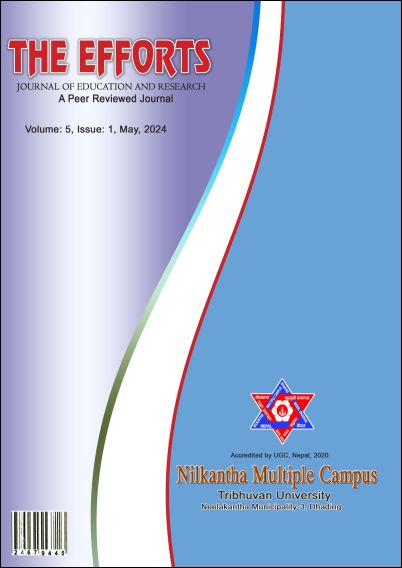Drivers of Land Abandonment in Neelakantha Municipality: Perceptions of Farmers
DOI:
https://doi.org/10.3126/ejer.v5i1.65636Keywords:
destruction of food crops by wild animals, high cost of agro product, land abandonment, out migration, rough topographyAbstract
This study analysed the role of factors for land abandonment in Neelakantha municipality, Dhading. For this purpose, survey and causal-comparative research design are used. Similarly, Reliability and normality of the collected data was ensured by using cronbach alpha and Shapiro-Wilk test respectively. Then after, inferential statistical tools i.e. Pearson correlation and multiple regression analysis have been used to derive the result of the study. This study found that there is a significant impact of high cost of agro product, out migration, rough topography, lack of government protection from international competition, and destruction of food crops by wild animals on land abandonment. However, the impact of irrigation facility and market access on land abandonment was not statistically significant. The findings of the study suggest that the factors that contribute to land abandonment are complex and interrelated. However, the study provides some evidence that the factors that were found to be statistically significant can play a role in land abandonment.
Downloads
Downloads
Published
How to Cite
Issue
Section
License
All rights reserved. No part of this journal may be reproduced in any form or by any electronic means, including information storage and retrieval system, without prior permission from the publisher.




